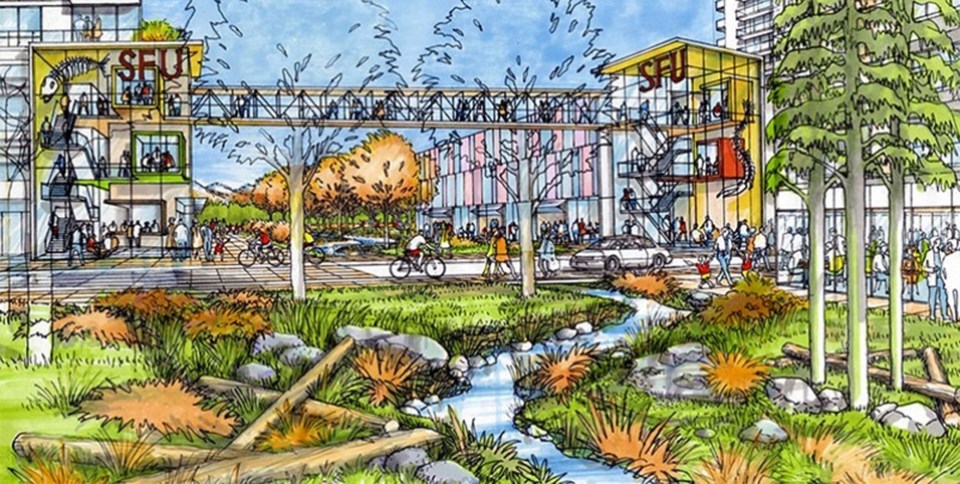Port Moody council may have to compromise on density in the city’s transit-oriented development area around the Moody Centre SkyTrain station if it’s to achieve more employment opportunities.
That’s the suggestion in a staff report to be presented next Tuesday as council’s committee of the whole considers a massive redevelopment of the 23-acre site that’s bounded by the railroad tracks and St. Johns Street to the north and south, between Moody Street in the west and Electronic Avenue in the east.
The project’s proponents, comprised of a consortium of property owners and builders that includes Anthem Properties, PCI Group, Beedie Living as well as TransLink, has already committed to providing approximately 2,000 potential office, tech, light industrial and retail jobs as part of its proposal to transform the neighbourhood.
As well, 3,200 to more than 4,000 new homes would be built in a series of buildings ranging from four to 36 storeys — 10 more than is currently allowed in the neighbourhood. While most of those homes would be market condominium units, about 300 to 385 would be market rental apartments and 400 to 450 would be apartments to be rented at below-market rates.
The report, authored by Port Moody’s senior planner Doug Allan, points out the project’s affordable housing and jobs components fall short of the city’s targets.
In particular, he said, the employment opportunities wouldn’t satisfy council’s recent decision to set an aspirational goal of achieving a jobs-to-population ratio of .41 by 2041. That’s almost double the city’s current jobs-to-population ratio of .25.
“If jobs are a priority in this area of the community, council may want to consider emphasizing this target over other project elements,” Allan said in his report.
That could mean agreeing to higher density as “the proponents have highlighted that there are limits to their financial capacity to include further increased employment space given the other policies and requirements for this area.”
The consortium is also proposing to create public spaces by daylighting Dallas/Slaughterhouse Creek that runs through the site, turning the area adjacent to the transit station into a .34-acre plaza for community gatherings as well as the provision for pocket parks along Spring Street that will be turned into a pedestrian- and cyclist-oriented promenade.
It’s also planning to construct a new pedestrian overpass to link the neighbourhood to Rocky Point Park.
Allan said the project doesn’t yet address provisions for child care in the neighbourhood, or age-friendly attributes.



